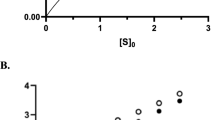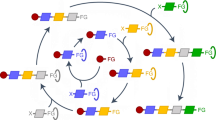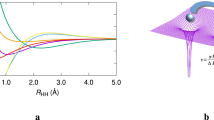Abstract
ANY initiation process which will provide one of the chain centres responsible for the propagation reaction, and the rate of which depends upon the product of the pressures of formaldehyde and oxygen, may be substituted for that which we propose without change in the structure of the kinetics. It is thus not surprising that there is no formal change in the derivation of the relationship which Messrs. McDowell and Thomas reproduce from our paper. Initiation reactions, however, can be distinguished by studying the overall activation energy of the chain reactions which they initiate and to which they make the principal contribution, and in choosing the most likely initiation reaction, reference must be made to the thermochemistry of the processes postulated. Now the overall temperature coefficient of the oxidation of formaldehyde at 350° C. indicates an energy of activation of about 20 k.cal., and nearly all of this is associated with the initiating process, for Which the velocity coefficient is k1. Thus the initiation process at the temperature studied cannot be more endothermic than c. 20 k.cal., and is probably less so. From the data of Bray1 we may derive and combining this with we may calculate that the reaction is endothermic to the extent of 50 k.cal. Since this figure must give a lower limit for the energy of activation, it would appear that the reaction cannot function as an initiating process for the formaldehyde oxidation in the range of temperature where the overall energy of activation is 20 k.cal.
This is a preview of subscription content, access via your institution
Access options
Subscribe to this journal
Receive 51 print issues and online access
$199.00 per year
only $3.90 per issue
Buy this article
- Purchase on Springer Link
- Instant access to full article PDF
Prices may be subject to local taxes which are calculated during checkout
Similar content being viewed by others
References
Bray, J. Amer. Chem. Soc., 60, 82 (1938). See also Rollefson, "Photochemistry", 276 (Prentice-Hall, 1939).
Author information
Authors and Affiliations
Rights and permissions
About this article
Cite this article
NORRISH, R. [Letters to Editor]. Nature 162, 367–368 (1948). https://doi.org/10.1038/162367b0
Issue Date:
DOI: https://doi.org/10.1038/162367b0
Comments
By submitting a comment you agree to abide by our Terms and Community Guidelines. If you find something abusive or that does not comply with our terms or guidelines please flag it as inappropriate.



